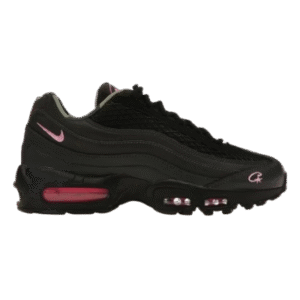
Thornton Chimney Sweep
Living in Thornton, Colorado, means dealing with some pretty wild weather swings. One day you might be soaking up the sunshine; the next, you’re shoveling snow off your porch. If you have a chimney, you know those temperature changes can do a number on your fireplace and flue. That’s why choosing the right chimney liner is such a big deal here. Let’s talk about which liner materials are up to the challenge, how to pick the safest option, what it’ll cost you, and what to do if things go sideways in the dead of winter.
“A well-chosen chimney liner is like a winter coat for your home—it keeps the warmth in, keeps dangers out, and stands up to whatever nature throws your way.”
Key Features: What to Look For in a Chimney Liner
When you’re picking out a chimney liner for a place like Thornton, you want something that can handle the wild mix of freezing cold, wind, and the occasional heatwave. You also want a liner that’ll play nice with whatever fuel you use—wood, gas, or pellets. Here’s a quick rundown:
- Heat Resistance: Winters get frosty, but inside your chimney, things heat up fast. The liner has to handle both extremes without cracking.
- Moisture Protection: Snow and rain can find their way into chimneys. A good liner keeps water out, stopping rust and crumbling brick.
- Flexibility: Some chimneys have odd shapes or twists. Flexible liners make installation easier and work around bends.
- Durability: Thornton’s freeze-thaw cycles can break down weak liners. You want something tough that’ll last for decades.
There are three main types of liner materials people use in Thornton: stainless steel, clay tile, and cast-in-place. Here’s a table to compare them at a glance:
| Material | Best For | Durability | Maintenance | Weather Resistance |
|---|---|---|---|---|
| Stainless Steel | All fuels, older chimneys | 20–50 years | Low | Excellent |
| Clay Tile | New builds, wood-burning | Up to 50 years (if undamaged) | Medium | Fair (can crack in freeze-thaw) |
| Cast-in-Place | Reinforcing old chimneys | 30–50 years | Low | Very Good |
Safety: Keeping Your Home and Family Secure
Safety is the number one reason to invest in a quality chimney liner. A good liner keeps the hot gases and sparks inside, instead of letting them sneak into your attic or walls. In Thornton, where the cold weather means you’re probably burning fires often, a bad liner can invite trouble—think chimney fires, smoke leaks, or even carbon monoxide inside your house.
Stainless steel liners are the heavyweights here—they don’t crack, corrode, or break down under quick temperature changes. Cast-in-place liners are also super reliable, especially for older chimneys that need reinforcement. Clay tile is okay for mild climates, but in Thornton, the freeze-and-thaw can make them split, which is a hazard you don’t want.
No matter which liner you pick, get it checked every year. A pro can spot little problems before they turn into big ones. If you ever smell smoke inside your home or hear odd popping sounds in the chimney, call an expert right away.
Cost: What’s the Real Price Tag?
Let’s be honest—nobody likes spending money on stuff you can’t show off to the neighbors. But with chimney liners, you get what you pay for. Here’s how the prices usually shake out in Thornton:
- Stainless Steel: These cost more up front (think $2,000–$5,000 installed), but they’re a one-time deal for most folks. Hardly any upkeep, and they last decades.
- Clay Tile: This is usually the cheapest way to go if you’re building a new house ($1,000–$3,000), but repairs and replacements add up fast if you get cracks from the weather.
- Cast-in-Place: These are custom jobs and can get pricey ($3,000–$7,000), but they can save an old chimney from being torn down.
If your liner ever needs replacing in the middle of winter, expect to pay a little more for emergency service—nobody wants to go up on a roof covered in snow!
Emergency Service: What to Do When Things Go Wrong
If you ever notice chunks of liner in your fireplace, smoke in odd places, or you suddenly can’t get a fire to draft right, you need help fast. Thornton’s winter weather can make chimney problems worse in a hurry. Here’s what to do:
- Stop using your fireplace right away.
- Call a local chimney expert. Many offer 24/7 emergency service, even during blizzards.
- Close the damper and keep pets and kids clear of the area.
- Don’t try to fix cracks yourself—chimney work is a job for pros, especially in freezing temperatures.
Most of the time, a proper stainless steel liner can be installed quickly, even in winter. The cost is higher for emergency visits, but it’s worth it for your family’s safety.
FAQs: Chimney Liners in Thornton
Q: How often should I have my chimney liner inspected?
A: Once a year is best—right before the cold season kicks in. That way, you’ll catch any problems before you need to light the first fire.
Q: Can I install a chimney liner myself?
A: It’s better to leave this to the pros. Liners have to fit just right, and a mistake can cause leaks or fire hazards.
Q: Do I need to replace my liner if I switch from wood to gas?
A: Sometimes, yes. Not all liners work with every type of fuel. Ask a chimney specialist to be sure you’re set up safely.
Q: What’s the biggest risk if I ignore my chimney liner?
A: Cracked or missing liners can lead to fires, carbon monoxide leaks, and expensive damage to your home. It’s not worth the gamble!





